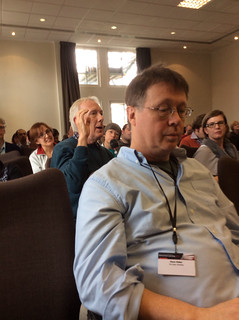Just knocked this up for use in a session in a couple of weeks. I like it - wish I had time to say more. Perhaps will come back again and do that. For now, thanks to Peter Goodyear! Here's a 'bit more'...(updated 22/10/2014)
The fairly subversive pedagogy of a networked learning activity rides bareback on the conventional hegemony of the student/staff dichotomy where the students are 'encouraged', almost as an act of faith, to take up the reflective and generative practice of knowledge work; through internalisation and externalisation, they bring their own practice under the reflective scrutiny of authoritative theory. They 'feel their size', and this brings on a minor crisis: it is expected that they will not understand everything they read, they realise that the bar is significantly higher than they had appreciated. Coming to terms with this discomfort is an important aspect of 'affect' in learning. Even to appreciate that 'higher ground' exists may be novel and generative in itself. But, more significantly, the mind is piqued into confusion, frustration, arousal and enquiry. Sense/meaning-making can commence, even if only through a stumbling advance. The 'stumble' metaphor here intentionally implies an iterative wobble 'back and forth', attempting stability, between the theory-laden artefact and the learner's own reified, tentative understanding. It may only be after this that the 'third space', an online forum, is deployed and the shared object(ive) of the scripted task invokes a collective sharing of the experience, providing the learner with contextually rich alternative attempted 'takes' on the theory and its application in practice, not least the practice of learning.
These 'affective' elements of learning are vital for what Illeris (2008,p13) terms,
"accommodative or transcendent learning.", where "one breaks down (parts of) an existing scheme and transforms it so that the new situation can be linked in. Thus one both relinquishes and reconstructs something, and this can be experienced as demanding or even painful, because it is something that requires a strong supply of mental energy... In return... (the learner has) understood"




